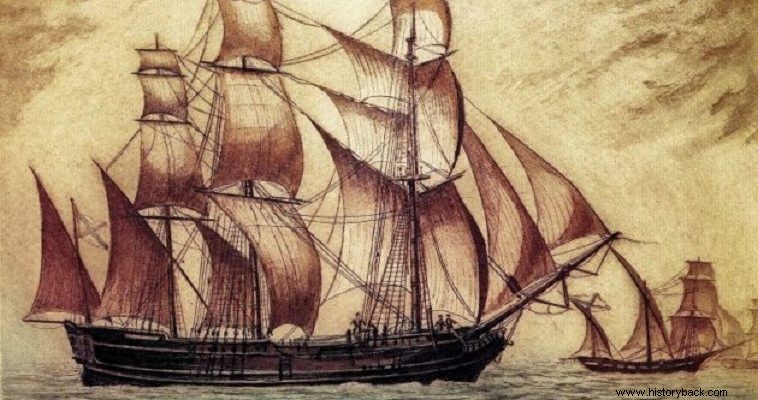
Lambros Katsonis developed into one of the greatest Greek naval fighters of all time. He was the man who, defying two empires of the time, fought alone against the Ottomans.
Lambros Katsonis was born in 1752 in Livadia, Boeotia. None of his family even knew the sea. Nevertheless, Lambros was to glorify this very unknown liquid element, proving the close and eternal relationship of the Greeks with the sea. Lambros, self-exiled from Greece after killing a Turk, fled first to Italy and then to Russia, where he joined the Russian armed forces with which he participated in the operations of the years 1770-74 against the Turks. At the beginning of 1788 the relations between Russia and the Ottoman Empire were once again tense. The explosion of a new war was only a matter of time.
Empress Catherine of Russia and her advisor and former lover Potemkin decided to form cruiser flotillas in the Aegean and Adriatic with which they intended to harass Turkish communications in those seas.
Katsonis then asked to take command of a cruiser flotilla. When he received Catherine's approval he left with six other Greeks for Trieste. There he was received with great joy by the local Greek community.
In fact, with the money collected by the expatriates, an American-built 28-gun corvette was purchased, which Lambros renamed "Athena of the Bear" - an honorary name of Catherine by the Greeks.
In the early spring of 1788 Lambros set sail for the Aegean with this corvette. His purpose was to form a fleet, either with ships of the islands, or by occupying hostile ones. Off Zakynthos, Katsonis spotted a pirate ship, a corvette.
Lambros immediately attacked her and after a fierce battle overpowered her, after neutralizing her entire crew. Then, after capturing two other Turkish ships, he sailed to Zakynthos for repairs. On May 27, 1788, the small Greek flotilla set sail for the Aegean.
Katsoni's route to the Aegean has gone down in history. In less than a month, Katsonis captured six more enemy ships, and had sunk two more. Thus strengthened, he decided to attack the Turkish fortress at Kastellorizo.
In two days the fort was captured and its 14 heavy guns – of 18 to 40 pounds – reinforced the artillery of the Greek ships. After the new victory Katsonis sailed south, reaching as far as Egypt, sinking or capturing every enemy ship.
His fleet already numbered 15 boats, excellently equipped and staffed with experienced crews of islanders, mainly Psarians. Katsoni's raids had already caused panic among the Turks and blocked the sea routes for their transport. The sultan was terrified and ordered Kapudan Pasha to attack Katsonis.
In August 1788, Katsonis sailed off Karpathos, at the head of six warships and two transports, which he had captured. Suddenly Katsonis perceived the presence of a powerful Turkish fleet. Its leader, Reala Bey, had under his command a dicroto of 74 guns, a large frigate of 50 guns and five sebeks of 28-30 guns.
Katsonis did not hesitate from the beginning to engage the enemy, despite the huge superiority of the Turks in the number of guns and men. As the distance between the two fleets decreased, Lambros invited the priest of "Athena" to perform a consecration. Indeed, the consecration took place and all the sailors worshiped the Cross and exchanged kisses with Lampros.
Immediately afterwards Katsonis spoke to his men and said to them:"Here, brothers, is the hour when we must all together today as Greeks either defeat the enemy of the faith or die." It was 5 o'clock in the afternoon and the sun was slowly setting, when smoke was seen from the Turkish ships. Soon the sound of shells was heard as they fell into the sea far from the Greek ships.
But Katsonis was in no hurry to give the order to return fire. He continued to move until he reached the strait between Karpathos and the islet of Saria. There, in the strait, he intended to engage in a naval battle, neutralizing the enemy's material advantage.
The Turkish gunners proved to be tragically misguided, unlike the Greeks, who reaped them with well-aimed fire. At some point, "Athina" found herself between the Turkish dikrot and the frigate. Nevertheless, it not only survived but also caused serious damage to both heavy enemy warships.
Finally, the Turks, having lost 500 dead, against seven Greeks, fled, leaving their transport boats at the mercy of the "Lambrinos". The victory was great, the first achieved by a Greek fleet since the time of the Byzantine Empire.
